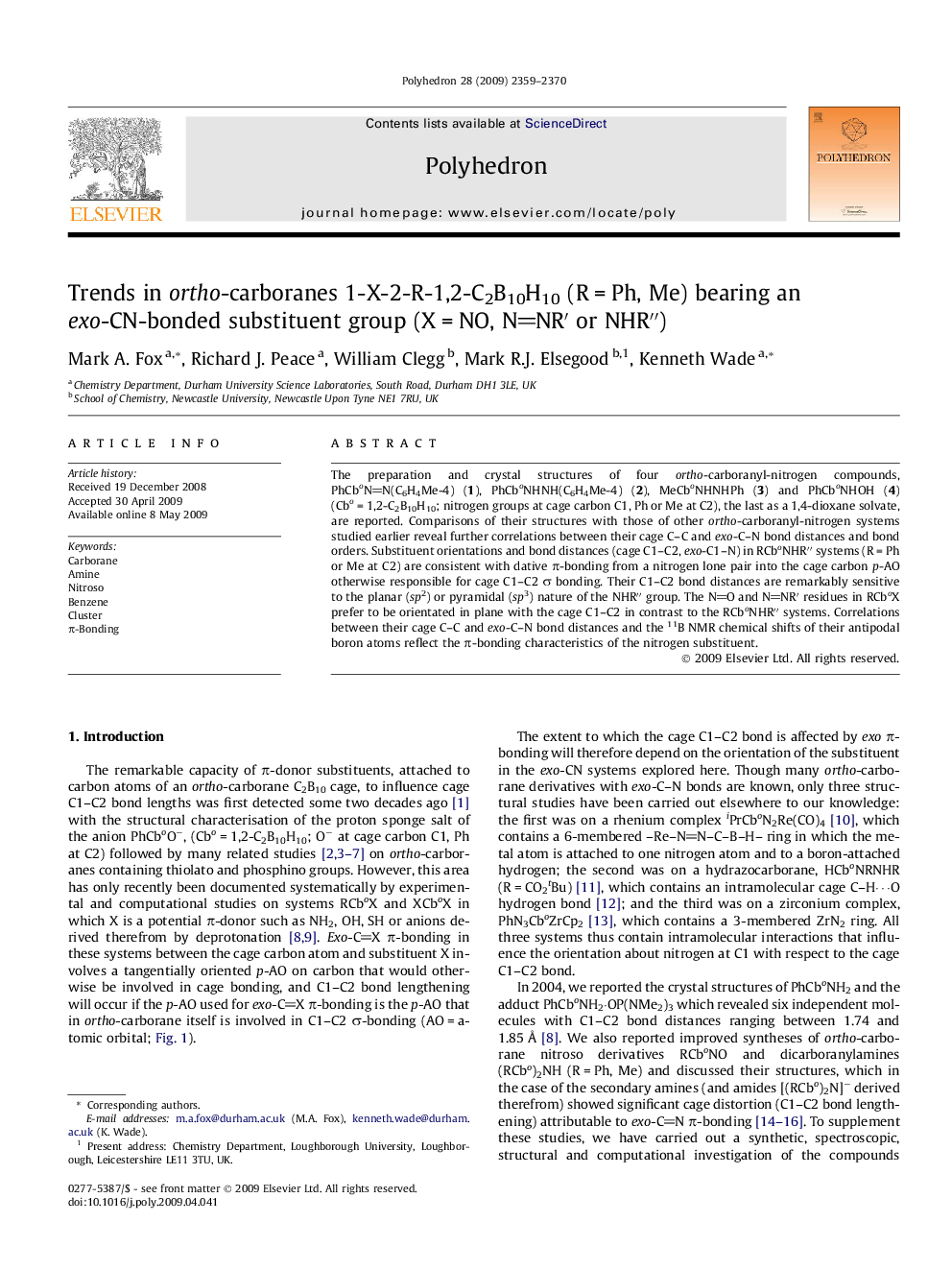| Article ID | Journal | Published Year | Pages | File Type |
|---|---|---|---|---|
| 1337624 | Polyhedron | 2009 | 12 Pages |
The preparation and crystal structures of four ortho-carboranyl-nitrogen compounds, PhCboNN(C6H4Me-4) (1), PhCboNHNH(C6H4Me-4) (2), MeCboNHNHPh (3) and PhCboNHOH (4) (Cbo = 1,2-C2B10H10; nitrogen groups at cage carbon C1, Ph or Me at C2), the last as a 1,4-dioxane solvate, are reported. Comparisons of their structures with those of other ortho-carboranyl-nitrogen systems studied earlier reveal further correlations between their cage C–C and exo-C–N bond distances and bond orders. Substituent orientations and bond distances (cage C1–C2, exo-C1–N) in RCboNHR′′ systems (R = Ph or Me at C2) are consistent with dative π-bonding from a nitrogen lone pair into the cage carbon p-AO otherwise responsible for cage C1–C2 σ bonding. Their C1–C2 bond distances are remarkably sensitive to the planar (sp2) or pyramidal (sp3) nature of the NHR′′ group. The NO and NNR′ residues in RCboX prefer to be orientated in plane with the cage C1–C2 in contrast to the RCboNHR′′ systems. Correlations between their cage C–C and exo-C–N bond distances and the 11B NMR chemical shifts of their antipodal boron atoms reflect the π-bonding characteristics of the nitrogen substituent.
Graphical abstractThe C1–C2 bond distances are remarkably sensitive to the planar (sp2) or pyramidal (sp3) nature of the NHR′′ group in 1-NHR′′-2-R-1,2-C2B10H10 systems.Figure optionsDownload full-size imageDownload as PowerPoint slide
